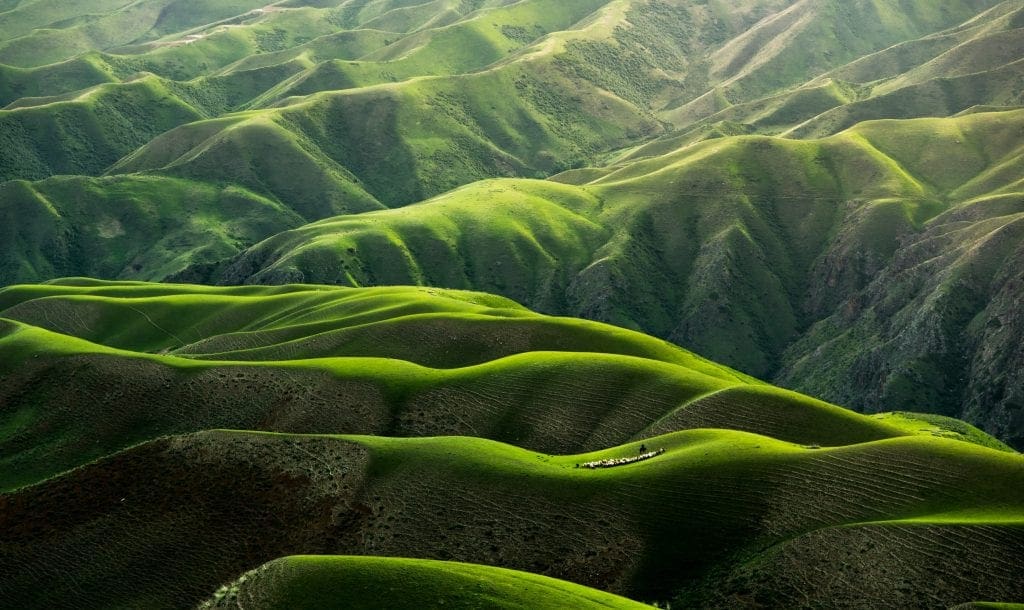- Our relationship with the natural world is broken.
- We can fix it by changing our obsession with growth and consumption.
- A million species are threatened with extinction.
When as a young man in 1948, my father, Luc Hoffmann, came down from the Swiss mountains, settled in the marshes of the Camargue and bought the Tour du Valat estate, imagining a centre dedicated to studying wetlands, he understood two things – the scale of the threat facing the Camargue from drainage and development, and that saving it meant not just protecting wildlife but also demonstrating nature’s benefit to people.
Although the environmental threats we face today are infinitely more complex and global in scale, these two insights – seemingly so obvious now but novel at the time – have only become more salient and more pressing as time has passed.
Nature does not just give us benefits, we are manifestly dependent upon it for our survival. And through its provision of clean air, water, food and other resources, it provides services to the global economy worth an estimated $125 trillion per year .
Yet we continue to deplete and degrade the planet’s natural capital at pace.
As the World Economic Forum Global Risks Initiative consistently confirms, nature loss and climate change are seen as being among the greatest systemic risks to our global economy, and already cause natural disasters costing more than $300 billion per year.
What must we do?
Five lessons
For the last 25 years, the MAVA Foundation has striven to support nature conservation that benefits people. Much of this has centred on five iconic sites, and what we have learnt together with our partners, is perhaps instructive.
In the Camargue wetland in southern France, our partner Tour du Valat has shown that research and science must be applied, addressing material topics such as health and agriculture, signposting solutions, and making the business case for nature.
In the Bijagós archipelago in Guinea-Bissau, through enabling indigenous Bijagó to manage territories and resources for the benefit of people and nature, Tiniguena and IBAP have demonstrated that working with local communities and safeguarding their rights, values and traditions in a ‘biocultural’ approach must increasingly become a central part of contemporary conservation strategies and public policies.
In Doñana in southern Spain, our long involvement with WWF has shown that working with all stakeholders across the landscape in Europe’s ‘orchard’, and integrating conservation and development around the Guadalquivir river basin, is the only way to reconcile competing demands and deliver on the EU Water Framework Directive.
In Prespa lakes at the crossroads of Albania, Greece and North Macedonia, effective conservation has relied on managing watersheds across borders and politics – something eased by the creation of the Transboundary Prespa Park in 2000.
And in Banc d’Arguin on the Mauritanian coast, with KfW Development Bank, Fonds Français pour l’Environnement Mondial and Agence Française de Développement, we helped establish Banc d’Arguin and Coastal and Marine Biodiversity Trust Fund to support the coastal conservation, underscoring the need for long-term finance.
Nature means business
Practical scientific research, working with local communities, engaging across landscapes, transboundary collaboration, and innovative finance – all are essential if we are to maintain a living planet and the healthy natural systems that underpin enterprise.
November’s Emissions Gap Report from UNEP is unequivocal. Unless global greenhouse gas emissions fall by 7.6% per cent a year between now and 2030, we will miss the 1.5°C temperature goal of the Paris Agreement and experience climate breakdown.
And last May’s Global Assessment from IPBES shows nature is declining at rates unprecedented in human history. A million species are threatened with extinction and significant impacts on natural systems and people around the world are now likely.
We need a dramatic shift beyond business as usual.
Companies can commit to nature by setting science-based greenhouse gas emission reduction targets and preparing to set targets for other natural systems as well as managing water-related risks and assessing natural capital impacts and dependencies.
Companies can protect and restore nature by preventing land degradation and conversion, investing in production landscapes and advancing ethical supply chains in agriculture and forestry.
And investors, insurers and lenders can assess and integrate natural capital risks, implement the recommendations of the Financial Stability Board’s Taskforce on Climate-related Financial Disclosures, and collaborate with the new Dutch Fund for Climate and Development on nature-based solutions for climate-resilient economies.
Sustainable economy and a New Deal
Beyond these steps, we also need to transform our global economic and governance systems, changing the rules of the game that fuel our unchecked pursuit of growth and ever-increasing material consumption.

We must find ways to meet our needs and aspirations within the bounds of one planet.
This means integrating the value of natural systems in our economic, financial and policy decision-making – including adopting measures of progress that go beyond GDP – and promote circular and regenerative economies that deliver long-term prosperity and realise the promise of the SDGs.
Above all, we need to forge a New Deal for Nature and People that prioritises human well-being, equity and inclusivity, and that creates a thriving ‘nature economy’.
Just as a united business voice helped secure a climate deal in Paris in 2015, it can now shape global efforts to reverse nature loss.
Alone, we cannot address the complex challenges we face. Together, we can find new purpose, transforming government, business and civil society.
We cannot choose between nature and ourselves. In 2020, let us set fair our course for the future.









